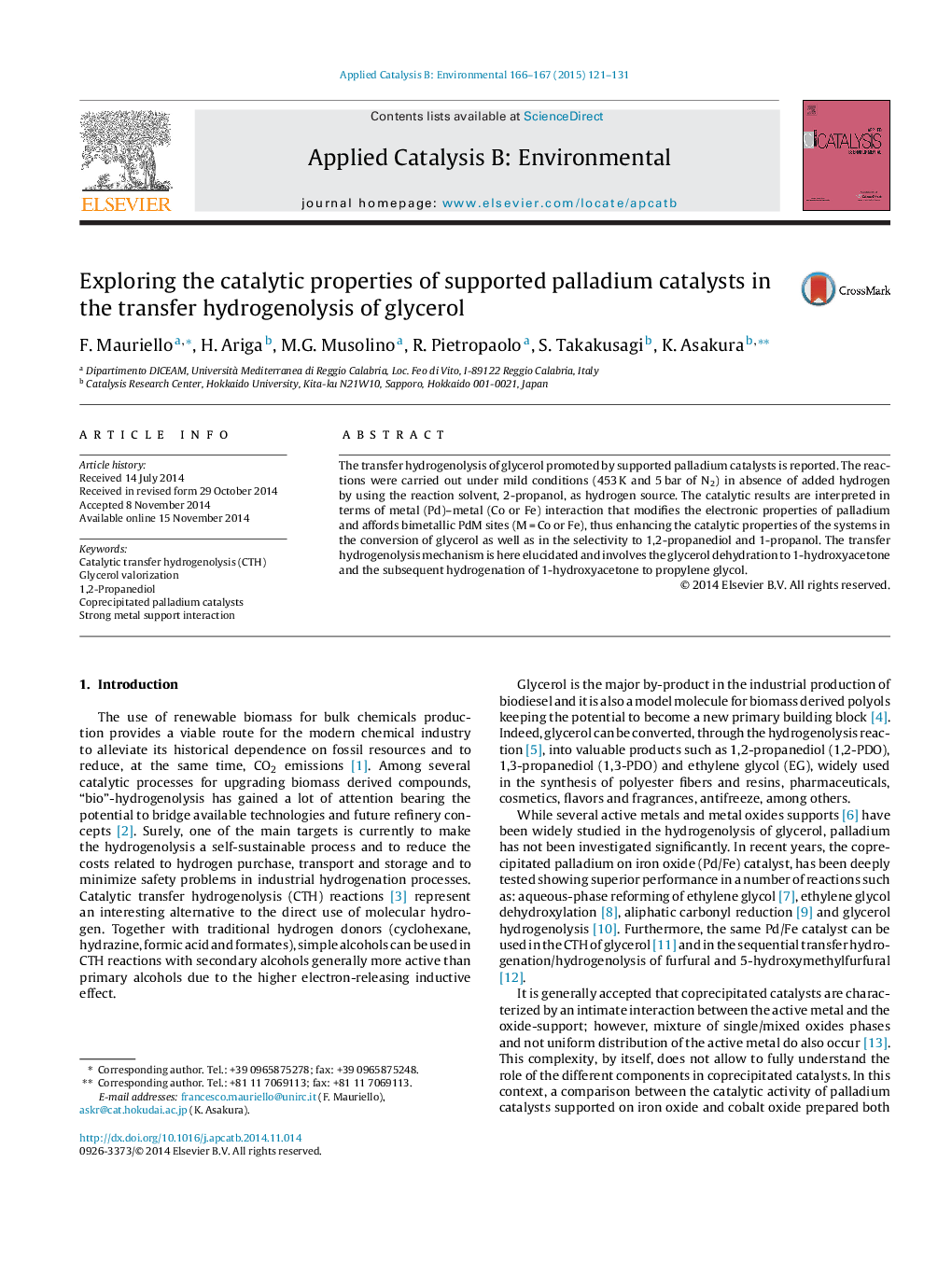| Article ID | Journal | Published Year | Pages | File Type |
|---|---|---|---|---|
| 45704 | Applied Catalysis B: Environmental | 2015 | 11 Pages |
•The transfer hydrogenolysis of glycerol is promoted by coprecipitated Pd-catalysts.•The reaction solvent (2-propanol) was used as hydrogen-donor.•Pd-Co and Pd-Fe ensembles have been identified as the active catalytic phases.•CTH mechanism involves the glycerol dehydration and subsequent hydrogenation.
The transfer hydrogenolysis of glycerol promoted by supported palladium catalysts is reported. The reactions were carried out under mild conditions (453 K and 5 bar of N2) in absence of added hydrogen by using the reaction solvent, 2-propanol, as hydrogen source. The catalytic results are interpreted in terms of metal (Pd)–metal (Co or Fe) interaction that modifies the electronic properties of palladium and affords bimetallic PdM sites (M = Co or Fe), thus enhancing the catalytic properties of the systems in the conversion of glycerol as well as in the selectivity to 1,2-propanediol and 1-propanol. The transfer hydrogenolysis mechanism is here elucidated and involves the glycerol dehydration to 1-hydroxyacetone and the subsequent hydrogenation of 1-hydroxyacetone to propylene glycol.
Graphical abstractFigure optionsDownload full-size imageDownload as PowerPoint slide
